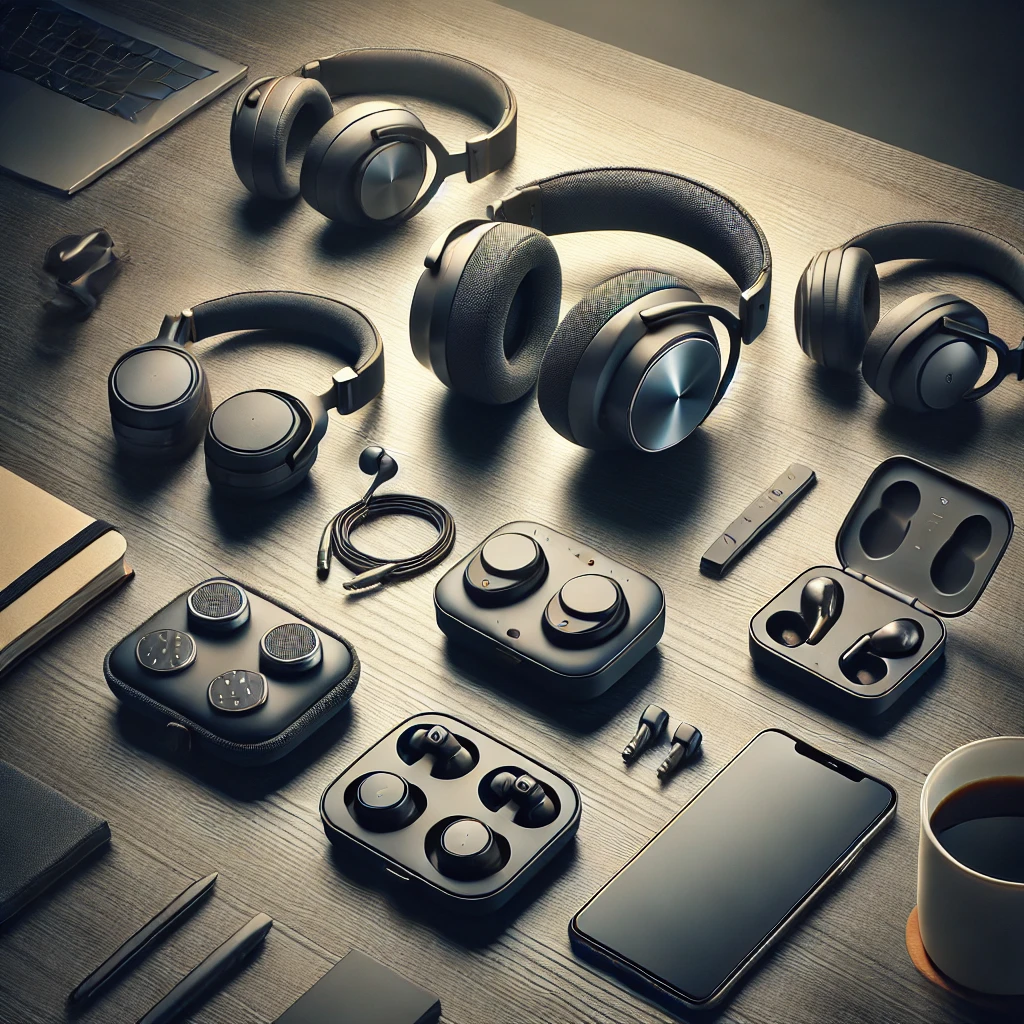Choosing the perfect pair of headphones can feel overwhelming with so many options available. Whether you’re an audiophile, a gamer, a remote worker, or just someone who loves music, the right headphones can make a world of difference. This guide will walk you through expert tips to help you select headphones that best fit your needs.
1. Understand Your Purpose
Before diving into specs and features, clarify what you’ll primarily use your headphones for:
-
- Music Lovers: Look for headphones with excellent sound clarity and balanced audio.
- Gamers: Prioritize surround sound and a built-in microphone.
- Fitness Enthusiasts: Choose lightweight, sweat-resistant wireless headphones.
- Remote Workers: Opt for noise-canceling features and a clear microphone.
Pro Tip: Over-ear headphones are ideal for immersive sound, while earbuds offer portability and convenience.
2. Choose the Right Headphone Type
a. Over-Ear Headphones
-
-
-
- Best for: Home listening, studio use
- Pros: Superior sound quality, noise isolation
- Cons: Bulky, less portable
-
-
b. On-Ear Headphones
-
-
-
- Best for: Commuters, casual listeners
- Pros: Lightweight, decent sound quality
- Cons: May cause discomfort after long use
-
-
c. In-Ear (Earbuds) Headphones
-
-
-
- Best for: Active lifestyle, portability
- Pros: Compact, lightweight, often wireless
- Cons: Limited noise isolation, prone to falling out
-
-
3. Consider Noise Cancellation vs. Noise Isolation
-
- Noise Cancellation: Uses technology to block external sounds—ideal for travel or busy offices.
- Noise Isolation: Physically blocks sound with earcup design or earbud seal—perfect for general use.
Pro Tip: Active Noise Cancellation (ANC) is a game-changer for frequent travelers or noisy environments.
4. Microphone and Controls
If you plan to take calls or use your headphones for virtual meetings:
-
- Check for a built-in microphone with noise reduction.
- Look for in-line or on-ear controls for easy volume adjustment and call handling.
5. Wired vs. Wireless
Wired Headphones:
-
- Stable connection, no battery concerns
- Best for: Studio recording, professional use
Wireless Headphones:
-
- Bluetooth convenience, no tangled wires
- Best for: Gym workouts, casual listening
Pro Tip: Look for Bluetooth 5.0 or higher for better connectivity and battery efficiency.
6. Pay Attention to Audio Specifications
a. Frequency Response:
-
-
-
- Look for a range of 20 Hz to 20,000 Hz for full-spectrum sound.
-
-
b. Impedance:
-
-
-
- For portable devices, choose headphones with less than 32 ohms impedance.
-
-
c. Sensitivity:
-
-
-
- Higher sensitivity (above 85 dB) ensures louder sound without distortion.
-
-
7. Battery Life (For Wireless Models)
-
- Aim for at least 20 hours of battery life on a single charge.
- Check if they support fast charging.
Pro Tip: Wireless headphones with USB-C charging are more future-proof.
8. Build Quality and Comfort
-
- Material Matters: Look for durable plastic, metal reinforcements, and quality ear cushions.
- Adjustable Headband: Ensures a snug fit.
- Ear Cushion Comfort: Opt for memory foam or breathable material for long-term use.
9. Set Your Budget
High-quality headphones range from $50 to $500+. Here’s a quick breakdown:
-
- Budget-Friendly: $50–$100 (decent quality, limited features)
- Mid-Range: $100–$300 (good sound, added features like ANC)
- Premium: $300+ (top-tier audio, premium build, advanced features)
10. Read Reviews and Test Before Buying
-
- Check expert reviews and user feedback.
- If possible, test headphones in-store for sound quality, fit, and comfort.
Pro Tip: Look for brands with good warranty policies and responsive customer support.
Conclusion
The right headphones depend on your specific needs, preferences, and budget. Prioritize sound quality, comfort, and features like noise cancellation or wireless connectivity to make the best choice.

